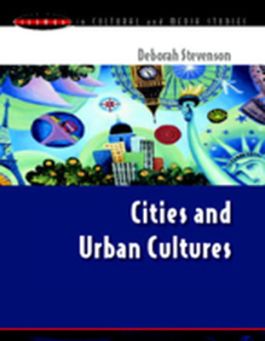Cities and Urban Cultures
1st Edition
0335227988
·
9780335227983
© 2003 | Published: April 16, 2003
*What is distinctive about urban life?*What key trends have shaped the contemporary city?*How have the city and urban cultures been explained by sociology and cultural studies?This is the first book to explore cities and urban life from the perspecti…
Read More
Request More Info
After you purchase your eBook, you will need to download VitalSource Bookshelf, a free app or desktop version here. Then login or create an account and enter the code from your order confirmation email to access your eBook.
- Access the eBook anytime, anywhere: online or offline
- Create notes, flashcards and make annotations while you study
- Full searchable content: quickly find the answers you are looking for
Series editor's foreword
Acknowledgements
Preface
city cultures
Landscapes of shadow and smog
the emergence of the industrial city
Cities of difference
inequality, marginalisation and fear
Meaning and memory
reading the urban text
Designing the urban
from the /f003city beautiful /f001to the 'end' of Modernism
The city as spectacle
culture and the reimaging of cities
Imagining the city
movies, maps and cyberspace
Conclusion
beyond urbanism?
Glossary
References
Index.
Acknowledgements
Preface
city cultures
Landscapes of shadow and smog
the emergence of the industrial city
Cities of difference
inequality, marginalisation and fear
Meaning and memory
reading the urban text
Designing the urban
from the /f003city beautiful /f001to the 'end' of Modernism
The city as spectacle
culture and the reimaging of cities
Imagining the city
movies, maps and cyberspace
Conclusion
beyond urbanism?
Glossary
References
Index.
*What is distinctive about urban life?
*What key trends have shaped the contemporary city?
*How have the city and urban cultures been explained by sociology and cultural studies?
This is the first book to explore cities and urban life from the perspectives of both sociology and cultural theory. Through an interdisciplinary approach and use of case material, the book demonstrates that the 'real' city of physicality and struggle and the 'imagined' city of representations are entwined in the construction of urban cultures.
Starting with a comparison of the rural and the urban, the book considers ways of imagining the city and of conceptualising urban cultures. It goes on to investigate the implications of several pivotal urban and cultural trends, such as the use of the arts and local cultures in city re-imaging, and the ways in which modernism, postmodernism and globalisation have shaped the built environment and the orientation of academic enquiry. Also examined is the way in which representations of the urban landscape in film, literature, art, and popular texts, have informed dominant ideas about the way certain city spaces - including city centres, urban waterfronts, and so-called 'global cities' - should look, function and 'feel'.
Designed as a text for undergraduate courses in cultural studies, sociology and wider social science, this book traces the development of urban environments from the nineteenth century to the present, and illuminates the nature of urban life.
*What key trends have shaped the contemporary city?
*How have the city and urban cultures been explained by sociology and cultural studies?
This is the first book to explore cities and urban life from the perspectives of both sociology and cultural theory. Through an interdisciplinary approach and use of case material, the book demonstrates that the 'real' city of physicality and struggle and the 'imagined' city of representations are entwined in the construction of urban cultures.
Starting with a comparison of the rural and the urban, the book considers ways of imagining the city and of conceptualising urban cultures. It goes on to investigate the implications of several pivotal urban and cultural trends, such as the use of the arts and local cultures in city re-imaging, and the ways in which modernism, postmodernism and globalisation have shaped the built environment and the orientation of academic enquiry. Also examined is the way in which representations of the urban landscape in film, literature, art, and popular texts, have informed dominant ideas about the way certain city spaces - including city centres, urban waterfronts, and so-called 'global cities' - should look, function and 'feel'.
Designed as a text for undergraduate courses in cultural studies, sociology and wider social science, this book traces the development of urban environments from the nineteenth century to the present, and illuminates the nature of urban life.

